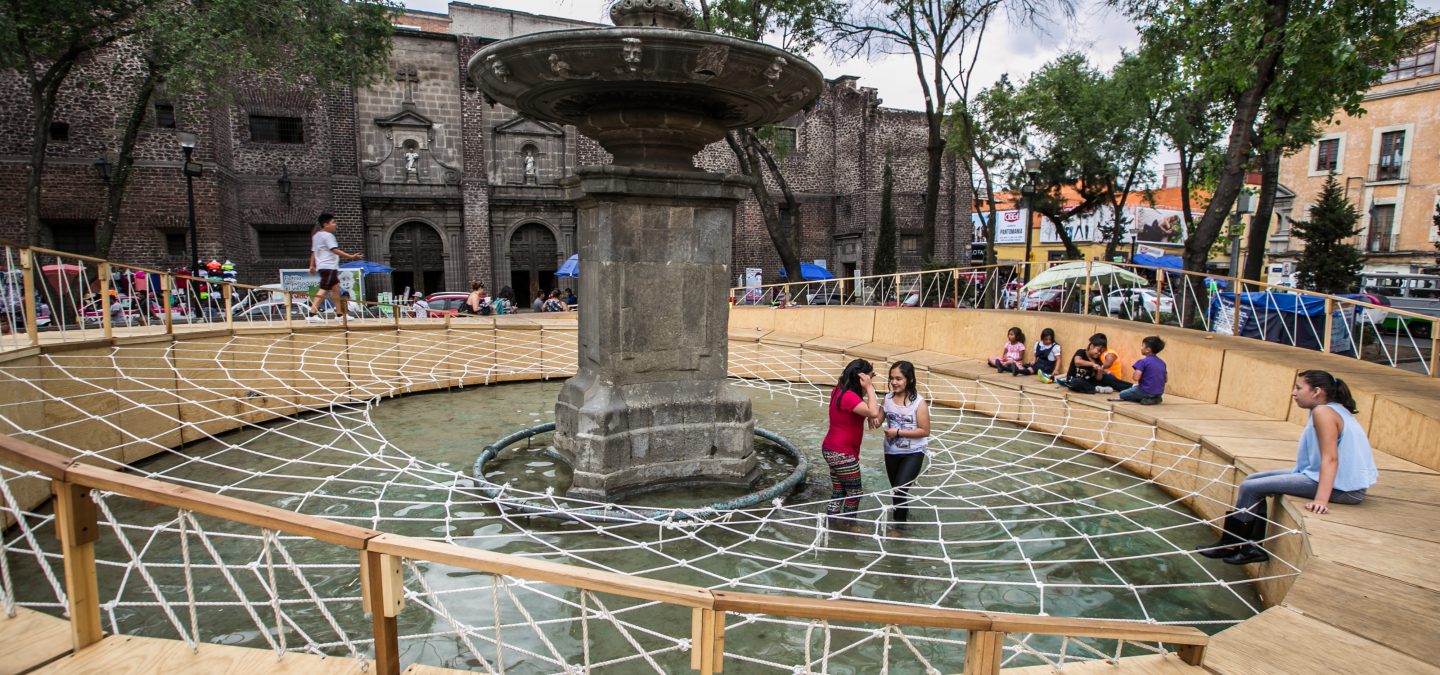
Keep up with our latest news and projects!

Laboratorio para la Ciudad is Mexico City’s government experimental and creative office, whose “Playful City”1 action research strategy focuses on understanding how play and playfulness can reconfigure urban imaginaries and provoke citizens to take an active role in the city-making processes.
In particular by designing and implementing different projects and tools to establish children’s perspective as a central factor in urban planning and public policy design. Playful City aims to prove that play can have an impact reactivating underused spaces, instigating alternative forms of resilience, enhancing everyday learning and ways of inhabiting the city, and ultimately regenerating the urban fabric.
Mexico City is home to 2 million 363 thousand 748 children2, more than the entire population of central Paris. They represent 26.7% of the city proper population, growing up to almost 5 million children in the metropolitan area. Despite the evident relevance of this population, advocating for planning cities for urban childhoods and from a playful perspective can be a challenge as adults are generally unaware of their adult-centric way of thinking. In Mexico, children are regarded as part of the so-called vulnerable population and not as rights holders, consequently influencing the way decision-makers think about them within the public sphere, affecting the hardware and orgware of their urban experience. The general belief is that safe places for children are either inner or fenced and designed specifically to fulfil a largely stereotyped representation of what play should look like.
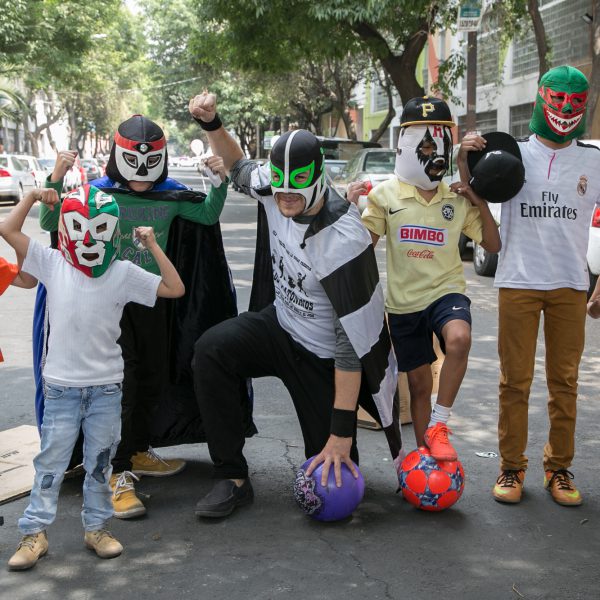
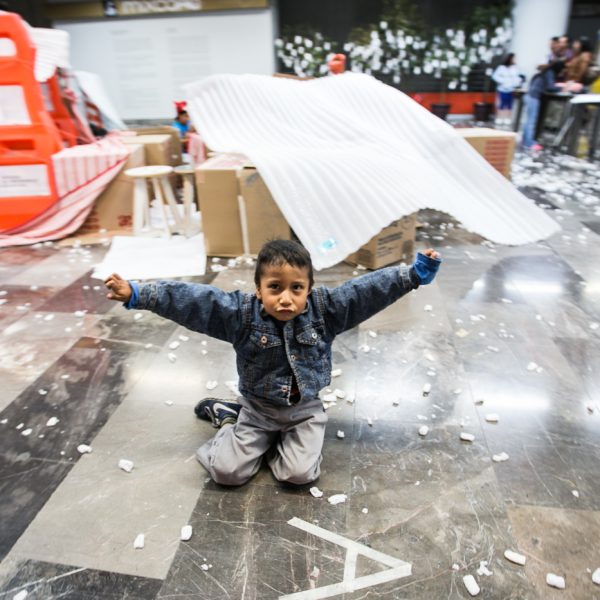
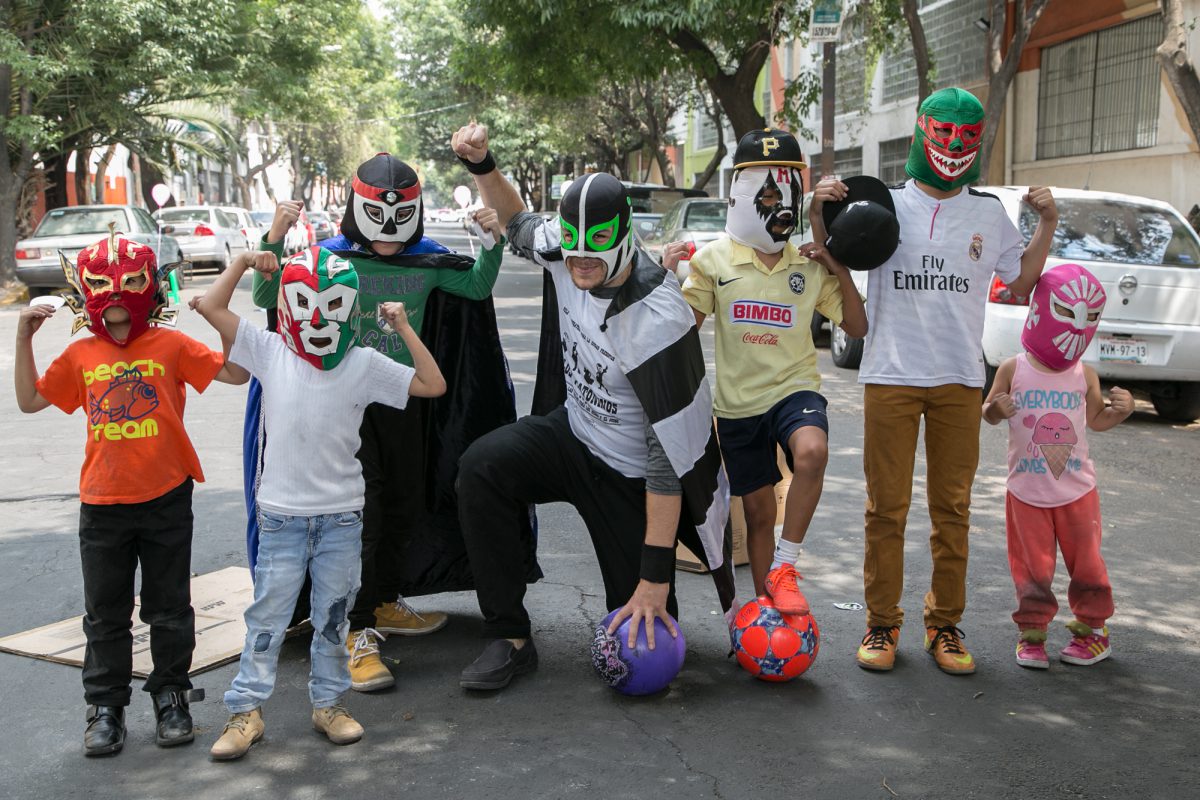
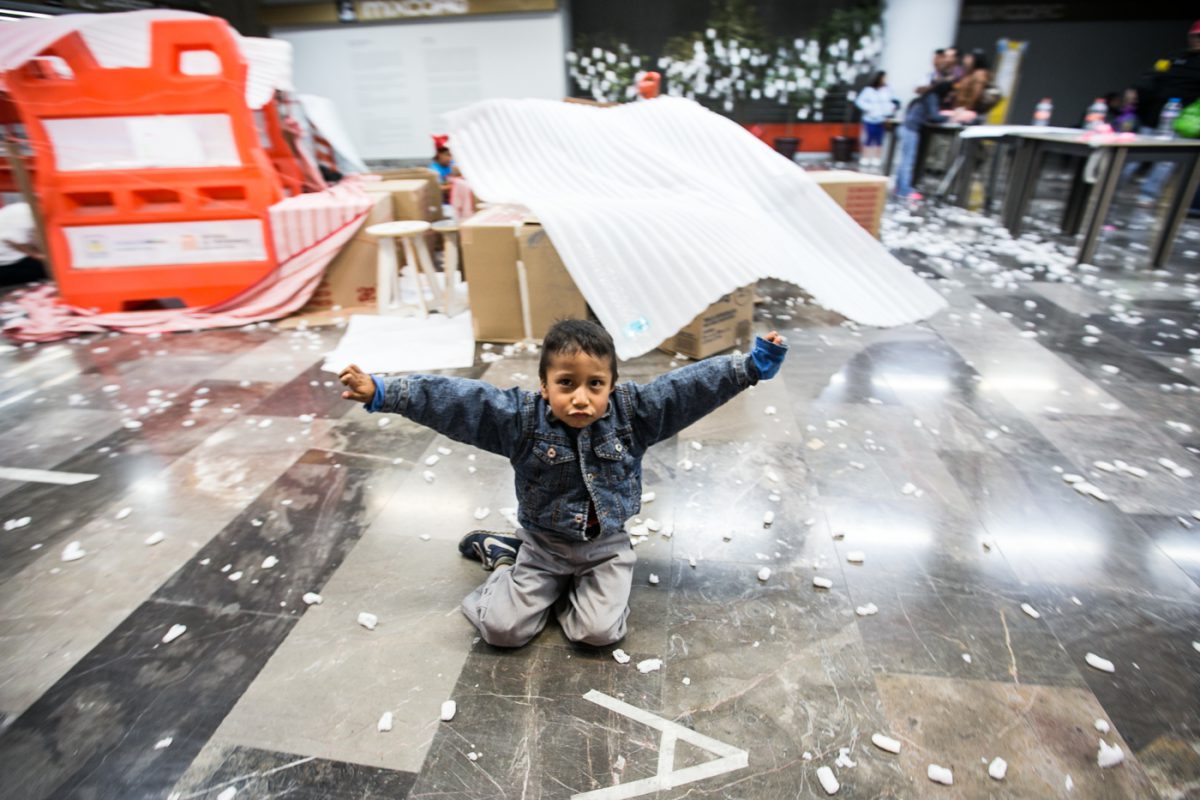
Aware of this situation Playful City developed a thorough revision3 of Mexico City’s laws and manuals regarding urban development and its relation to spaces traditionally “built for children”. The research’s key findings showed how the direct relationship between adults’ misconception of play, the environment’s hostility present around the city and its car-oriented model, is threatening children’s cognitive and physical development.4 On an urban scale, this can be reflected on the uneven distribution, poor quality and socially-imposed restrictions of public and play spaces. The following strategies presented below (amongst other projects) spotlight the situation in a bottom-up approach and aim to reclaim cities for children and play.
Peatoniños is a wordplay in Spanish that combines the terms pedestrian and boy or girl and it stands for the children that walk. Using “Liberating the streets for children and play” as its main motto, Peatoniños’ is a project responding to the lack of open play spaces and green areas in marginalised areas that have a high population of children. The project consists of planning, designing and implementing playstreets developed under community centred design methodologies, urban analysis through GIS tools and pedagogical approaches to the right to play and the city. These playstreets aim at producing physical manifestations of alternative street uses, demonstrating the social fabric and interactions beyond the spatial paradigms of the city’s car-oriented model.
By approaching each playstreet as a design iteration, proving different hypothesis to serve as a baseline for the next one, Peatoniños builds a set of local knowledge and social relations that can, ultimately help develop the tools and networks to direct the project in two directions. The first one, a community-driven and self-organised set of playstreets; and second, an ongoing public program adopted by Mexico City’s government
Urban Toys5 can be described as a public competition to design temporary playful interventions, focusing on reactivating underused public spaces located in the proximity of high population of children, and promote by exemplifying, the importance of children’s participation in the design of their surrounding urban environments.
The competition’s guidelines were previously co-designed —through a series of workshops—, with children who live nearby three chosen sites, to identify areas of improvement on the spaces, and design their ideal playscape. The participants of the competition had the challenge to design an urban toy following children’s ideas, addressing site-specific problems, and embracing the spirit of an urban toy being an open exploration of new urban shapes and playful possibilities that defy the conventional plastic jungle gyms. Parallel to the interventions6, an impact assessment analysis is being carried out to understand if the dynamics of public life change and the effect play and playfulness have on improving social cohesion and the communal perception, ultimately leading to the appropriation of the spaces. Urban Toys seeks to be a replicable methodology that can be used in other cities to advocate for the importance of play in urban communities.
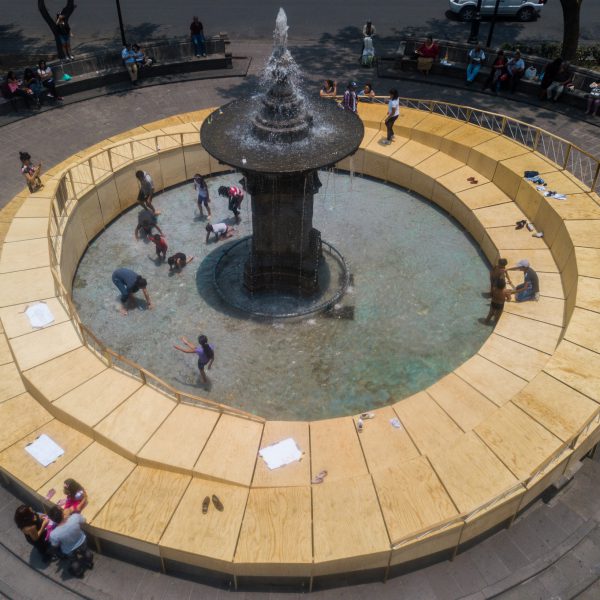
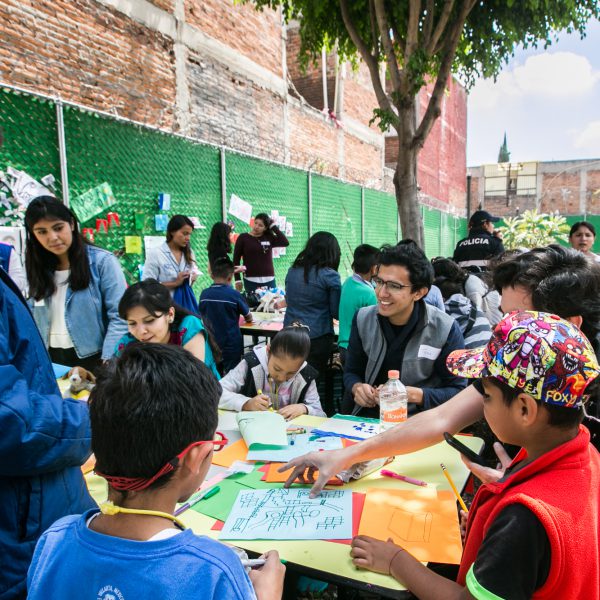
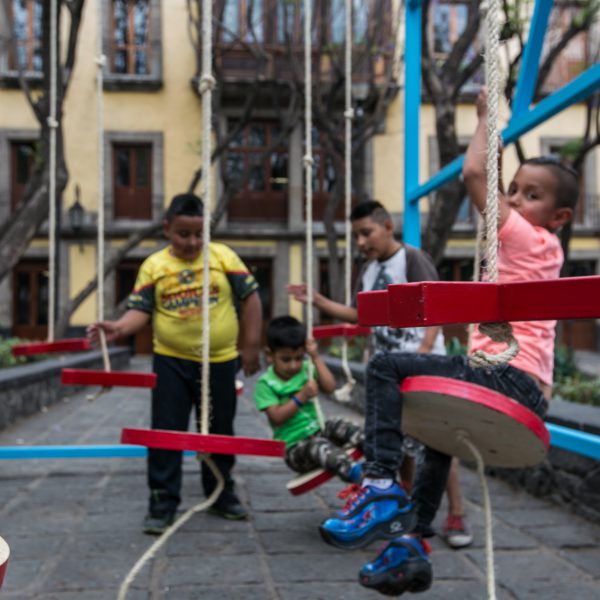
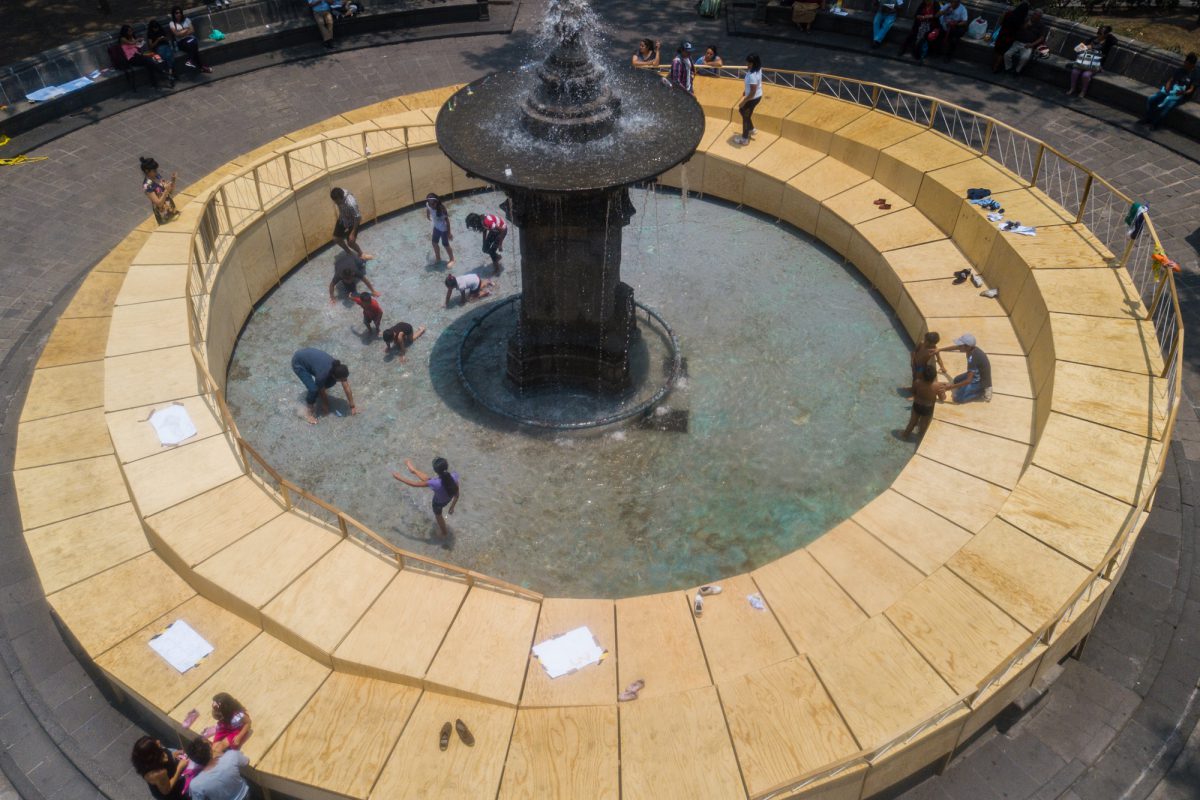
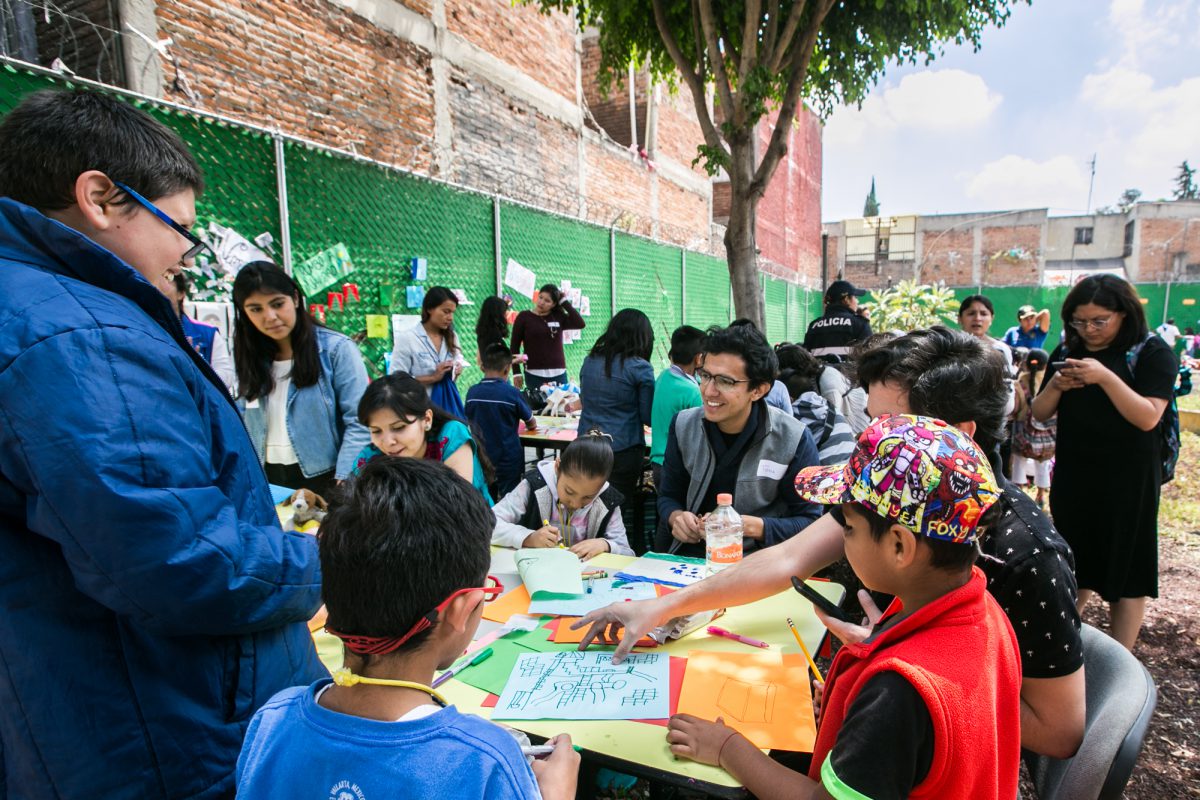
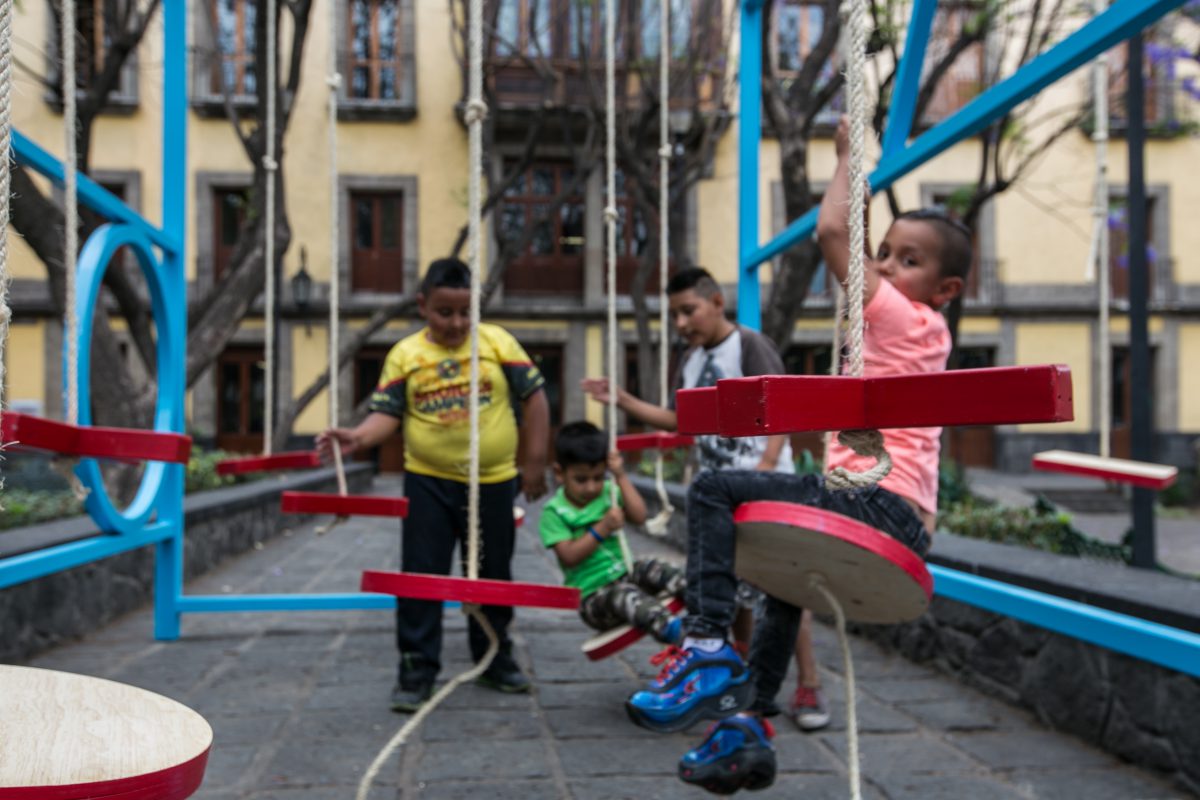
Peatoniños and Juguetes Urbanos have allowed, both adults and children, to re-discover the street and the city as a playful experience and re-engage in a playful mindset. So far, the most successful strategy to achieve this has been to design bottom-up mechanisms by collaborating with key actors from the community and acknowledging that every context is different, even within the same city. However, to generate a city-wide change, the prototypes need to balance action-research, knowledge and data-driven measurements to demonstrate the impact of play in order to be translated into evidence-based policy. For the Playful City strategy, the streets and the urban environment are places where play, initially guided by children, can break with the established order and help to re-create the city with the resources at hand.
This article belongs to a series of stories about the city at eye level for kids! You can access the full book online in PDF or pre-order your hardcopy to be delivered to your home.
Get your book here1. Lab for the City is home to five research areas: Open City, Creative City, Pedestrian City, Playful City and Proposed City, see more at: http://labcd.mx/
2. REDIM 2015, La infancia cuenta en México 2015, México: 2015. More at: https://drive.google.com/ file/d/0B3sUkR6njKcVNV83ZVdiZHhrazQ/view
3. Play the City: Reimagining urban play spaces for Mexico City’s childhood is a publication developed in collaboration with PhD Tuline Gülgönen as the 2016/2017’s project for the Center for Mexican and Central American Studies (CEMCA). The research identified the challenges play spaces face, mapped out the government areas involved in their creation, drafted a series of public policy recommendations and developed an evaluation tool to be used by children. 4. CONAPRA 2013. Cervantes T., A., Rosas O., S.R., González G., D.A. (2013). Tercer informe sobre la situación de la seguridad vial, México 2013. Primera edición. p. 46. Consultado en: http:// conapra.salud.gob.mx/Interior/Documentos/ Observatorio/3erInforme_Ver_ImpresionWeb.pdf
5. Urban Toys was developed in collaboration with the Historic Center Authority.
6. Out of 86 entries, three interventions were selected, by a panel of experts, to be constructed (one on each site). The winner interventions were featured in Archdaily.